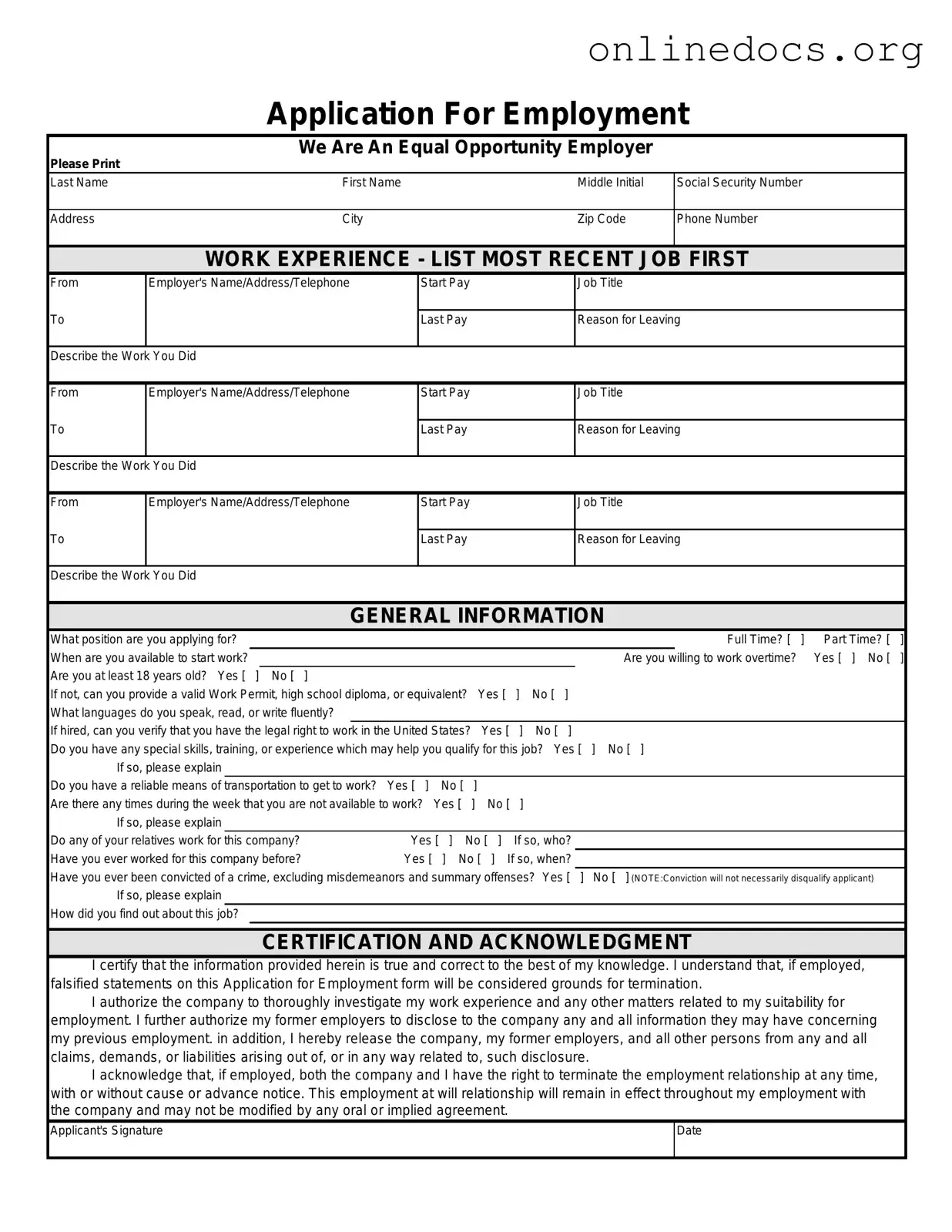The Job Application Form is similar to a Resume in that both documents provide a summary of an applicant's work history and qualifications. A Resume typically highlights skills, education, and relevant experiences in a concise format, often tailored for specific job applications. Like the Job Application Form, it requires personal information and may include sections for work experience and education. However, while a Resume is often more flexible and can be customized for each job, the Job Application Form is usually a standardized document that employers require for their hiring process.
Another document that shares similarities with the Job Application Form is the Cover Letter. A Cover Letter accompanies a Resume and serves to introduce the applicant to potential employers. It allows candidates to express their interest in a specific position and explain how their skills align with the job requirements. Both documents require personal details and a demonstration of the applicant's qualifications. However, the Cover Letter provides a narrative format, allowing for more personality and context, while the Job Application Form is more structured and straightforward.
The Employment History Verification Form also bears resemblance to the Job Application Form. This document is often used by employers to confirm the accuracy of the employment history provided by an applicant. Similar to the Job Application Form, it typically asks for details about previous employers, job titles, and dates of employment. While the Job Application Form is filled out by the applicant, the Employment History Verification Form is usually completed by the applicant's former employers to validate the information submitted.
The Reference Check Form is another document that aligns with the Job Application Form. This form is used by employers to gather feedback about an applicant from previous supervisors or colleagues. Both forms require personal information and details about the applicant's work history. However, the Reference Check Form is focused on obtaining third-party insights into the applicant's qualifications and work ethic, whereas the Job Application Form is filled out directly by the applicant.
The Background Check Authorization Form is similar to the Job Application Form in that it collects personal information necessary for conducting background checks. Both documents require the applicant's consent and personal details such as Social Security numbers and addresses. However, the Background Check Authorization Form specifically focuses on obtaining permission to investigate an applicant's criminal history, credit history, or other relevant background information, which is not typically included in the Job Application Form.
The I-9 Employment Eligibility Verification Form is another document that shares characteristics with the Job Application Form. Both are essential for the hiring process and require personal information. The I-9 Form specifically verifies an employee's eligibility to work in the United States, while the Job Application Form gathers information about the applicant's qualifications and work history. Both forms must be completed as part of the employment process, ensuring compliance with legal requirements.
In addition to the aforementioned important documents, another essential form in vehicle transactions is the Trailer Bill of Sale, which acts similarly to other formal agreements in ensuring clarity and legality in purchases. This crucial document not only protects the interests of both buyers and sellers but also provides a clear record of the exchange, including details about the trailer's condition and ownership transfer. For those looking to simplify the process, templates for these forms can be found at legalformspdf.com, which offer valuable resources to ensure that all necessary information is properly documented.
Finally, the W-4 Employee's Withholding Certificate is similar in that it is a necessary document for new employees. While the Job Application Form collects information to assess qualifications, the W-4 Form determines how much federal income tax should be withheld from an employee's paycheck. Both forms require personal details and are essential for the employer's records, but they serve different purposes within the employment process.
